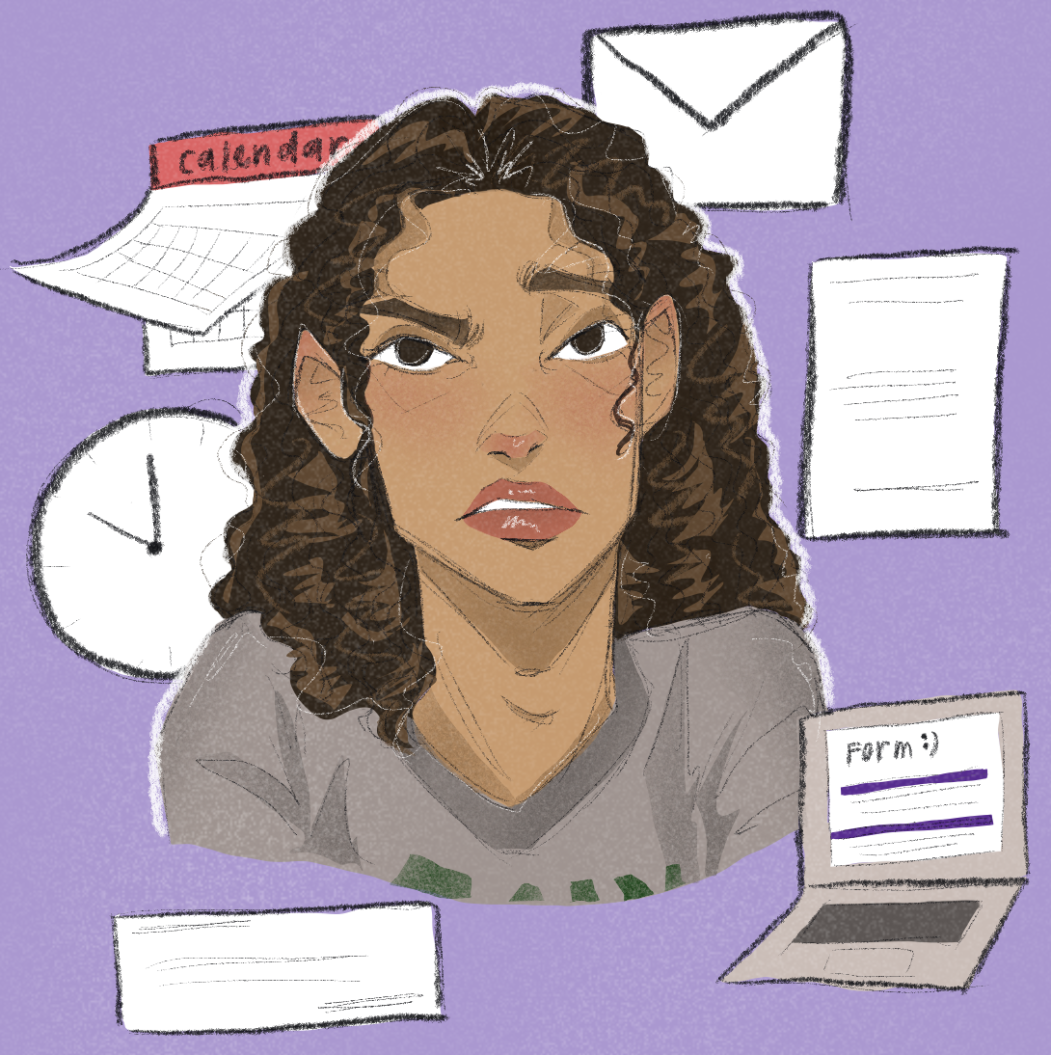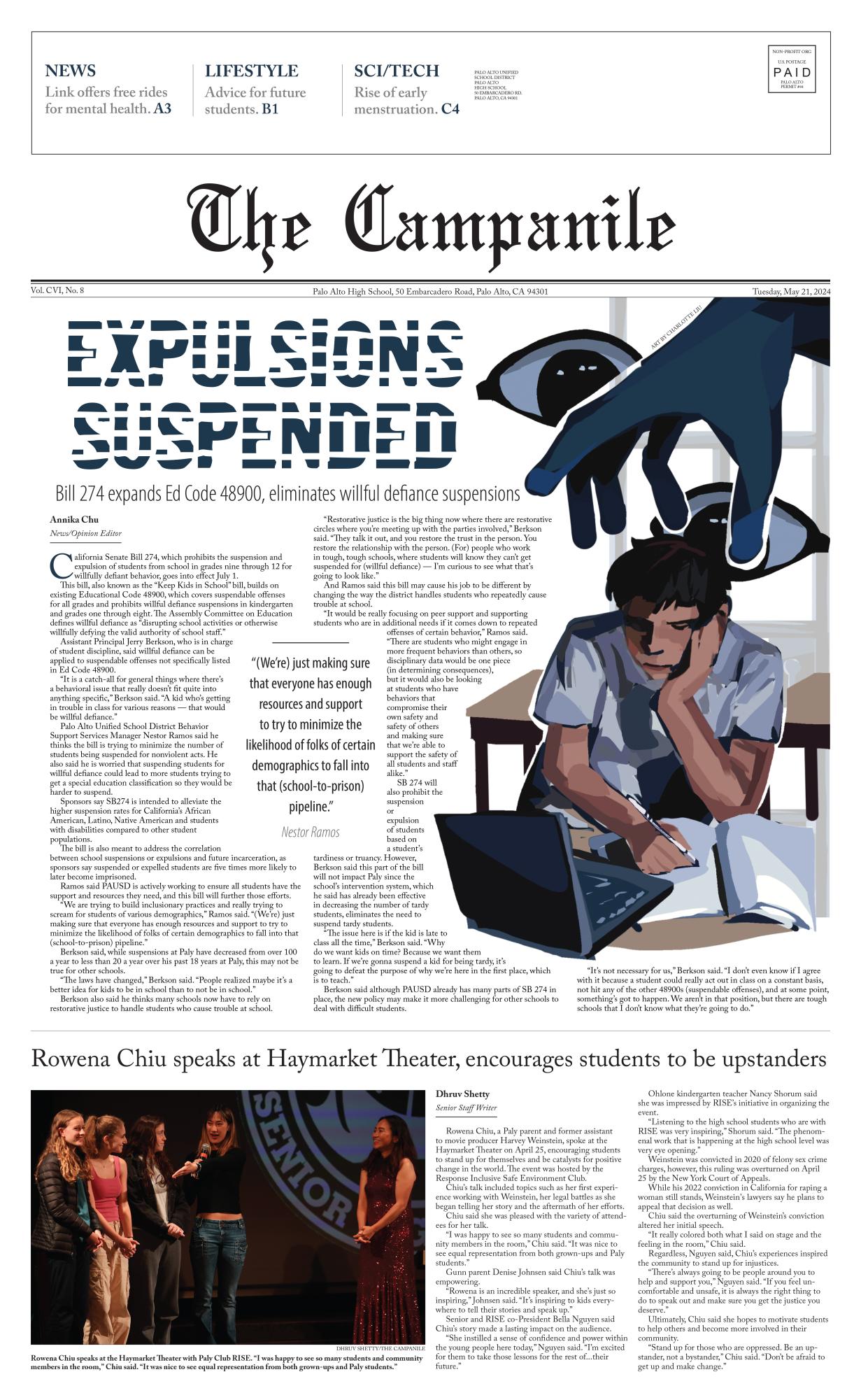When I walked into the Guidance Center seeking help for the first time as a freshman, I was greeted with a welcome sign and an empty desk. I scanned the room in confusion, and a boy on my right nodded towards the purple Google form lighting up a computer screen.
I went over, filled out my request to talk with my counselor, and left looking forward to the advice I would receive to prepare myself for the upcoming school year. That was two years ago. I never received a date or appointment to meet with my counselor. In fact, I heard nothing but silence from the Guidance Department for over a year.
When I reached out again toward the end of my sophomore year, this time by directly emailing my counselor, all I got was an auto-reply email. The email told me to set up an appointment through the Google Form in the Guidance Center.
Frustrated, I realized I was running in circles. I know I am not alone in facing this issue: many students experience delays when trying to meet with their counselors. This issue can be attributed to a lack of communication as well as inflexibility.
As a result, many students feel the process of booking an appointment with their counselor is too stressful or daunting, often leaving students less motivated and unlikely to reach out and ask for help when they need it.
Students look to their counselors for guidance when making schedule changes, for example.
These schedule changes are critical when it comes to grades, mental health and college applications, so it is important to have access to a guidance counselor who can provide answers to personal questions.
However, when a student’s guidance counselor is not present or is unable to provide support, students are often left to figure out the complex structure of academic pathways and their own academic careers on their own.
This could lead students down a pathway that isn’t suited for them because while students may have access to the course catalog and upperclassmen’s reviews of certain classes, students don’t necessarily know which classes they should drop, keep or add, often increasing stress and anxiety.
While the administration encourages students to use the Three-Tiered Guidance System and rely on their Teacher Advisor first, the system is insufficient because advisors often don’t have the information students need.
To better this system, the Guidance Department should clarify the specific roles of Advisors and what information they have to students through a more outlined and organized Three Tier System.
Allowing more transparency through clarity of the different roles divided between Advisors and counselors would help students make educated decisions.
The Google Form appointment scheduling system is also insufficient because it fails to acknowledge students are the ones who need to ask for these appointments. To make this appointment process more streamlined for students, the Guidance Department should make a master calendar using Calendly, much like the Paly College and Career Center counselors do, with blocked-out dates that show when counselors aren’t available.
Additionally, the calendar should include a form where students post their availability.
This way, if random openings free up, guidance counselors can meet with students sooner rather than later.
I urge Guidance to understand how important having accessible counselors is to students while at Paly and after; it directly affects their academic and personal lives physically, emotionally, and mentally.
The administrator in charge of guidance did not respond to interview requests for this story. The reporter requested to interview a guidance counselor but was told one was not available at that time.
Editor’s note. The guidance counselors have taken issue with a number of assertions in this story, and a response from guidance counselor James Hamilton, the author’s counselor, is below. Also, the note at the end of the original story has been updated to reflect the fact that the reporter did not directly reach out to a guidance counselor for comment but tried to schedule an appointment to talk to a counselor and was told no one was available to talk to her.
Counselor James Hamilton’s response:
Our team was troubled by the opinion piece published online on Oct. 15, titled “Guidance should adjust student appointment system,” for myriad reasons. I have spoken with the author twice now, and also with the editor, and have been invited to share our concerns in response.
The piece states that “…counselors did not respond to interview requests for this story,” but none of the counselors were ever actually invited to respond. This has since been confirmed with members of the Campanile. We expect any reputable publication to verify the stories they publish, particularly stories that level a bevy of criticisms at professionals that may harm their reputations and impact their livelihood. There were a handful of other verifiable inaccuracies in this story that we would have preferred an opportunity to refute and/or clarify before they were published for the public to read. I will address some of these here.
The implication in the sub headline that there are issues due to a “lack of organization” is one that we take exception with. We are able to verify every sign in via Google Forms, and have a column in the resulting sheet where we mark that we have followed up. We also have access to every email that was sent to us and our responses to those emails. Personally, I am not missing student requests for meetings and have confirmed that none were missed here. I almost always agree to meet with students unless it is determined through communication that the issue may be resolved in a more efficient manner, or that the meeting should actually be with another adult.
The story goes on to critique the three-tiered guidance system, stating that Advisors do not “have the information that students need” and that Guidance should clarify the three-tiered guidance system, both implications that we again do not agree with. Our Teacher Advisors hold meetings regularly with the counselors, approximately twice per month for each grade group (9/10 & 11/12).
We are always providing our Advisors with new information and giving them space to bring questions/issues that come up for them; they are all well-trained and well-informed on how to guide students through course selection, course changes, our 11/12 advisors actually write our students’ counselor letter of recommendation, and they work directly with students on the entire college-application process. If there is anything they do not know, they will reach out directly to the student’s counselor or college advisor.
No student should ever feel that their Advisor cannot help them, or direct them to the right place for assistance. Furthermore, the roles of the Advisor and the description of the three-tiered guidance system can be found in the student handbook, on our Guidance webpage, and is communicated at every parent night presentation. The process for course changing is thoroughly described in the course catalog, as well. To state that it is not clearly defined or communicated is inaccurate.
We welcome constructive feedback to improve our practices and take recommendations into consideration. Calendly was offered in this story as one such option we can use, but we already do use Calendly to offer annual 504 reviews with families and it fills quickly. Offering Calendly to all students to sign up at any time would mean there would be little to no time available ever. We cannot have our calendars completely filled because there is other work that needs to be done outside of student schedule-concern meetings. While we would love to meet with each and every student as often as they wished, it simply is not practical–especially, when we have an Advisory process that has proven effective and efficient for this purpose since its inception.
We recognize that seeing a counselor can at times be challenging in the moment. Unless it is a crisis situation, we may not be readily available when a student walks in and would like to meet. School Counselors have large caseloads that have ranged from 400 to almost 600 families per counselor, depending on the year. We also have a plethora of job responsibilities outside of just student schedule concerns.
This is part of the purpose of having an Advisor with a much smaller caseload. Additionally, we can always get a student on the calendar if we determine there is a need for a meeting. To be clear, any student ever in need of a meeting for any reason will be seen either by their school counselor, or referred to the appropriate staff member.




